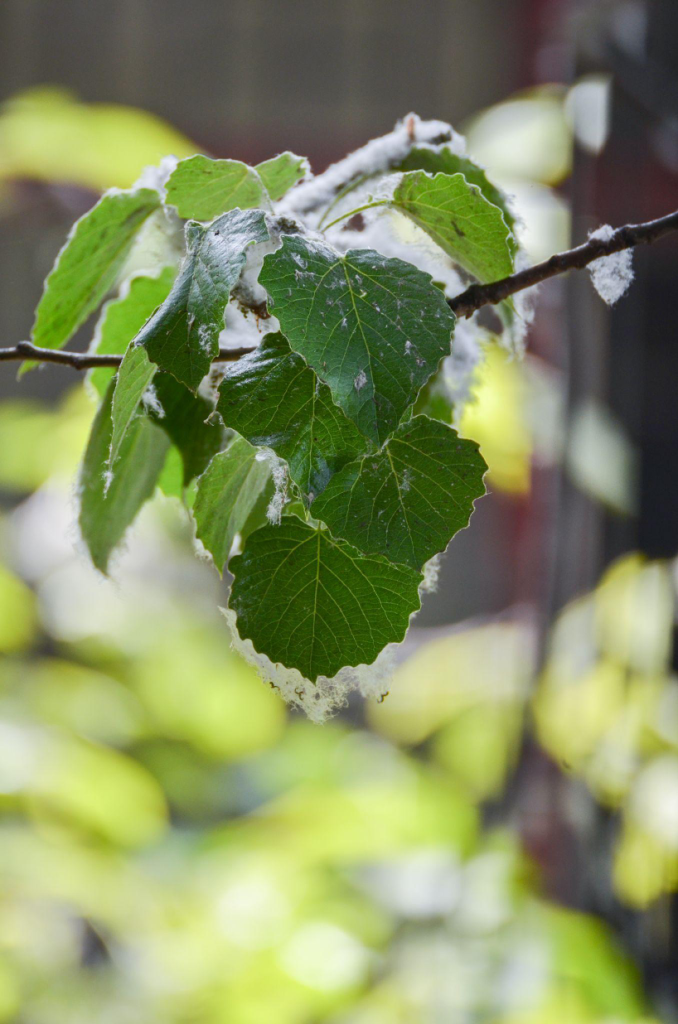In a recent paper in Molecular Ecology, Shang et al. used population genomic data to characterize patterns of genetic diversity and divergence across the genomes of 8 different species of poplar. With an extensive population genomic dataset, they characterize patterns of introgression and signals of linked selection across the various species’ genomes. They found striking correlations in the landscapes of genetic variation across the species’ genomes, suggesting conserved patterns of linked selection across the divergence gradient of their sampled species.
We sent some questions to Huiying Shang and Thibault Leroy, the corresponding authors of this work, to get more detail on this study.

What led to your interest in this topic / what was the motivation for this study?
We are fascinated by speciation, the process that generates biodiversity. An ongoing challenge in the discipline is identifying so-called speciation genes, i.e., molecular variation that generates reproductive barriers to gene flow. One general strategy to identify these genomic regions involves scanning across pairs of genomes and looking for specific signals in variation of nucleotide diversity and differentiation across the genome. However, similar signals amongst the genomic “landscapes” can be generated by other evolutionary forces, in such a way that the landscapes are known to be highly heterogeneous and therefore complex to interpret. Relatively little remains known about the relative contribution of the different evolutionary forces and how these landscapes evolve with time. Fascinated by some pioneering works in monkeyflowers (Stankowski, et al. 2019 PLoS Biology 17) and in avian species (Irwin, et al. 2018 Molecular Ecology 27), Christian Lexer planned to use a series of Populus species pairs along a divergence gradient as models, with pairs spread from an early to a late stage of speciation. In addition, the genus Populus has a wide geographic distribution, a small diploid genome, and experiences extensive gene flow between some species pairs. We therefore decided to resequence 200 whole-genomes to investigate the relative contribution of different evolutionary processes to these landscapes.
What difficulties did you run into along the way?
Our general hypothesis was the main driving force promoting genetic differentiation changes during the course of speciation. Reflected in the genome, different drivers lead to differentiated genomic footprints regarding the local variation in nucleotide diversity (π), relative (FST) and absolute sequence divergence (DXY). By investigating the genomic landscapes of a series of species pairs along a divergence gradient, we thought we can identify the main evolutionary force that contributes to the genomic landscapes of differentiation based on theoretical expectations under different evolutionary scenarios. But unfortunately, it is not as simple, in fact, linked selection played a prime role in shaping the genomic landscapes across all species pairs. Christian Lexer was the main initiator of many of these ideas for the project, the sudden loss of our colleague drove us all to see this project through in honour of his memory. We think he would have been fascinated with the scientific journey this project ultimately provided and the new opportunities opening up in speciation genomics
What is the biggest or most surprising innovation highlighted in this study?
We found significantly positive correlations between DXY and π in all species pairs, though the correlation coefficients became weaker as divergence increased. This was not expected, as in the early stage of speciation, we observed extensive gene flow between species and expected our results to be in agreement with a ‘divergence with gene flow’ scenario (including negative correlations between DXY and π). Even at early stages of divergence, our results were more consistent with a prime role of linked selection, especially background selection, in shaping the genomic landscapes.
Moving forward, what are the next steps in this area of research?
Our approach is interesting but remains limited by its empirical nature, because our interpretation is mostly based on verbal models. Methodological developments allowing new methods to compare the different scenarios – virtually allowing to quantify the associated parameters – could be extremely helpful in order to aid future interpretations. In the future, the development of such methods, trained with extensive demo-genetic simulations, could greatly contribute to a better understanding of the effects of the divergence process on genome-wide molecular patterns.
Describe the significance of this research for the general scientific community in one sentence.
Speciation is a complex continuous process involving multiple evolutionary factors contributing to genomic differentiation, but the main force involved may vary at different stages.
Describe the significance of this research for your scientific community in one sentence.
We found that the genomic landscapes of diversity and divergence are mostly shaped by linked selection, along with gene flow and standing genetic variation, and that this result holds true independently of the stage across the divergence gradient.
Shang, H., Field, D. L., Paun, O., Rendón-Anaya, M., Hess, J., Vogl, C., Liu, J., Ingvarsson, P. K., Lexer, C., & Leroy, T. (2023). Drivers of genomic landscapes of differentiation across a Populus divergence gradient. Molecular Ecology, https://doi.org/10.1111/mec.17034
